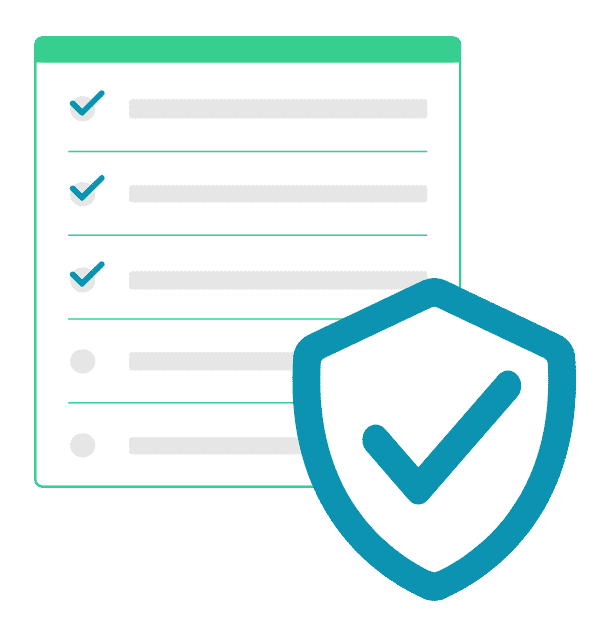Note: We update this list every year. To see the most recent version of this post, click here.
There are numerous products that Microsoft will no longer support starting in 2017. If you are still using any of these products, what does this mean to you? For starters, Microsoft will not be releasing any new security updates, servicing updates, or online technical content updates for these products. This also means all free or paid assisted support options for these products will be ending.
Under the HIPAA Security Rule, 45 C.F.R. § 164.308 (a)(5)(ii)(B), organizations must implement procedures for detecting, guarding against, and reporting malicious software. If you’re using software that is no longer supported by Microsoft, you are not HIPAA compliant.
Part of a comprehensive HIPAA Security Plan is to regularly check and perform updates on your software. When thinking of HIPAA compliance, security updates for your software and devices are key to keeping all of the electronic Protected Health Information (ePHI) you control safely.
First, Window Vista support is being discontinued. While this was not one of Microsoft’s more popular OS releases, it’s estimated that 1% of devices are still using this operating system. As of April 11th, it will no longer be supported.
Also, as of October 11, 2017, Office 2007 and Office Servers 2007 will no longer be supported. Now is the time to start making plans to migrate to newer versions of operating systems and Office.
Here is a more comprehensive list of Microsoft Products and Service Packs whose support will end this year. Consult with your IT professional if you have any questions, and especially before you make any major system upgrades.
Microsoft Products and Service Packs moving to End of Support:
January 10, 2017
- Microsoft Customer Care Framework 2005 .NET 2.0 Edition
- Microsoft Internet Security and Acceleration Server 2006
- Microsoft Voice Command 1.6
- Microsoft SQL Server 2012 Service Pack 2
April 11, 2017
- Microsoft BizTalk Adapters for Host Systems
- Microsoft BizTalk FileAct and InterAct Adapters for SWIFT
- Microsoft Dynamics NAV 5.0
- Microsoft Exchange Server 2007
- Microsoft Expression Web
- Microsoft Host Integration Server 2006
- Microsoft Office Communicator Phone Edition
- Microsoft Office InterConnect 2007
- Microsoft Visual Studio 2005 Team Edition for Database Professionals
- Windows Vista
July 11, 2017
- Engyro Product Connectors for Microsoft System Center Operations Manager 2007
- Microsoft Identity Lifecycle Manager 2007
- Microsoft Integration Designer 2.5
- Microsoft Intelligent Application Gateway 2007
- Microsoft ProClarity Analytics Server 6.3
- Microsoft ProClarity Desktop Professional 6.3
- Microsoft ProClarity SharePoint Viewer 6.3
- Microsoft SoftGrid Application Virtualization 4.1 for Desktops
- Microsoft SoftGrid Application Virtualization 4.2 for Desktops
- Microsoft SoftGrid Application Virtualization for Terminal Services 4.1
- Microsoft Virtual PC 2007
- Microsoft Visual SourceSafe 2005 Standard Edition
October 10, 2017
- 2007 Microsoft Office Servers
- 2007 Microsoft Office Suite
- Microsoft Customer Care Framework 2008
- Microsoft Dynamics GP 10.0
- Microsoft Dynamics SL 7.0
- Microsoft Expression Blend
- Microsoft Expression Design
- Microsoft Expression Media
- Microsoft Expression Studio
- Microsoft Office Groove 2007
- Microsoft Office Groove Server 2007
- Microsoft Office Project 2007
- Microsoft Office Project Server 2007
- Microsoft Office Project Portfolio Server 2007
- Microsoft Office SharePoint Designer 2007
- Microsoft Office Visio 2007
- Microsoft SharePoint Server 2007
- Microsoft Visual J# Version 2.0 Redistributable Package Second Edition
- Microsoft Windows SharePoint Services 3.0
- Microsoft SQL Server 2014 Service Pack 11
Customers should migrate to the next available Service Pack in order to continue security updates and to be eligible for other support options.
Windows XP
Is your computer still running on Windows XP operating system? Windows XP is one of the most vulnerable operating systems still in use. With the volume of malware presently filling the internet, you need to end the use of Window XP–NOW! The Death of Windows XP was published by Total HIPAA back in February 2014, and it still is relevant as we move into 2017. Since ending support on April 8, 2014, Windows XP usage continues at 9.07% globally according to Net Market Share as of December 2016.2



